
Filter News
Area of Research
- Advanced Manufacturing (2)
- Biology and Environment (10)
- Clean Energy (41)
- Fusion and Fission (6)
- Fusion Energy (1)
- Isotopes (5)
- Materials (27)
- Materials for Computing (2)
- National Security (9)
- Neutron Science (13)
- Nuclear Science and Technology (14)
- Quantum information Science (3)
- Supercomputing (20)
News Type
News Topics
- 3-D Printing/Advanced Manufacturing (24)
- Advanced Reactors (8)
- Artificial Intelligence (22)
- Big Data (9)
- Bioenergy (12)
- Biology (10)
- Biomedical (15)
- Biotechnology (3)
- Buildings (7)
- Chemical Sciences (8)
- Clean Water (2)
- Climate Change (10)
- Composites (2)
- Computer Science (37)
- Coronavirus (12)
- Cybersecurity (3)
- Decarbonization (11)
- Education (1)
- Emergency (1)
- Energy Storage (11)
- Environment (23)
- Exascale Computing (6)
- Fossil Energy (2)
- Frontier (5)
- Fusion (13)
- Grid (8)
- High-Performance Computing (11)
- Isotopes (13)
- Machine Learning (7)
- Materials (10)
- Materials Science (27)
- Mathematics (3)
- Mercury (1)
- Microscopy (5)
- Molten Salt (1)
- Nanotechnology (11)
- National Security (11)
- Net Zero (4)
- Neutron Science (22)
- Nuclear Energy (26)
- Partnerships (10)
- Physics (13)
- Polymers (4)
- Quantum Computing (9)
- Quantum Science (20)
- Security (3)
- Simulation (9)
- Space Exploration (4)
- Summit (11)
- Sustainable Energy (18)
- Transformational Challenge Reactor (3)
- Transportation (14)
Media Contacts
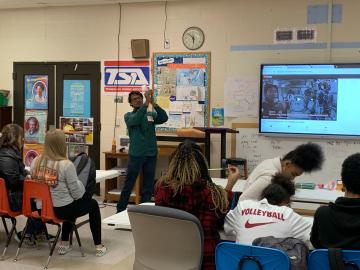
“Engineering is about building things to help others.” Before diving into a longer explanation, that’s how Singanallur “Venkat” Venkatakrishnan, an electrical and computer engineer ORNL, described engineering to students at Northwest Middle School.
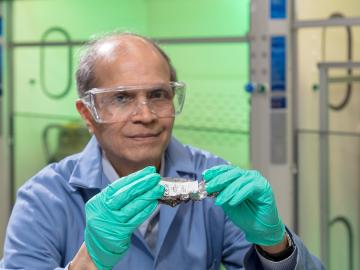
Three technologies and one commercialization program developed at the Department of Energy’s Oak Ridge National Laboratory have won National Technology Transfer Awards from the Federal Laboratory Consortium.
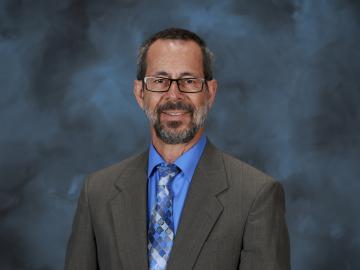
Four staff members from the Department of Energy’s Oak Ridge National Laboratory have been named fellows of the Neutron Scattering Society of America.

Joe Paddison, a Eugene P. Wigner Fellow at the Department of Energy’s Oak Ridge National Laboratory, believes there’s more information to be found in neutron scattering data than scientists like himself might expect.

Biological membranes, such as the “walls” of most types of living cells, primarily consist of a double layer of lipids, or “lipid bilayer,” that forms the structure, and a variety of embedded and attached proteins with highly specialized functions, including proteins that rapidly and selectively transport ions and molecules in and out of the cell.
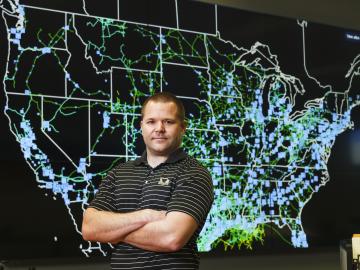
Nils Stenvig has always had an interest in solving big problems. That desire drove his focus on electrical engineering in college and eventually led him to Oak Ridge National Laboratory, where today he’s using his expertise to better understand the world’s largest machine—the electrical grid.

Scientists at the Department of Energy’s Oak Ridge National Laboratory have developed a new method to peer deep into the nanostructure of biomaterials without damaging the sample. This novel technique can confirm structural features in starch, a carbohydrate important in biofuel production.
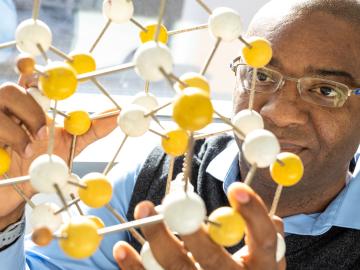
Valentino (“Tino”) Cooper of the Department of Energy’s Oak Ridge National Laboratory uses theory, modeling and computation to improve fundamental understanding of advanced materials for next-generation energy and information technologies.

We have a data problem. Humanity is now generating more data than it can handle; more sensors, smartphones, and devices of all types are coming online every day and contributing to the ever-growing global dataset.

Each year, approximately 6 billion gallons of fuel are wasted as vehicles wait at stop lights or sit in dense traffic with engines idling, according to US Department of Energy estimates.


